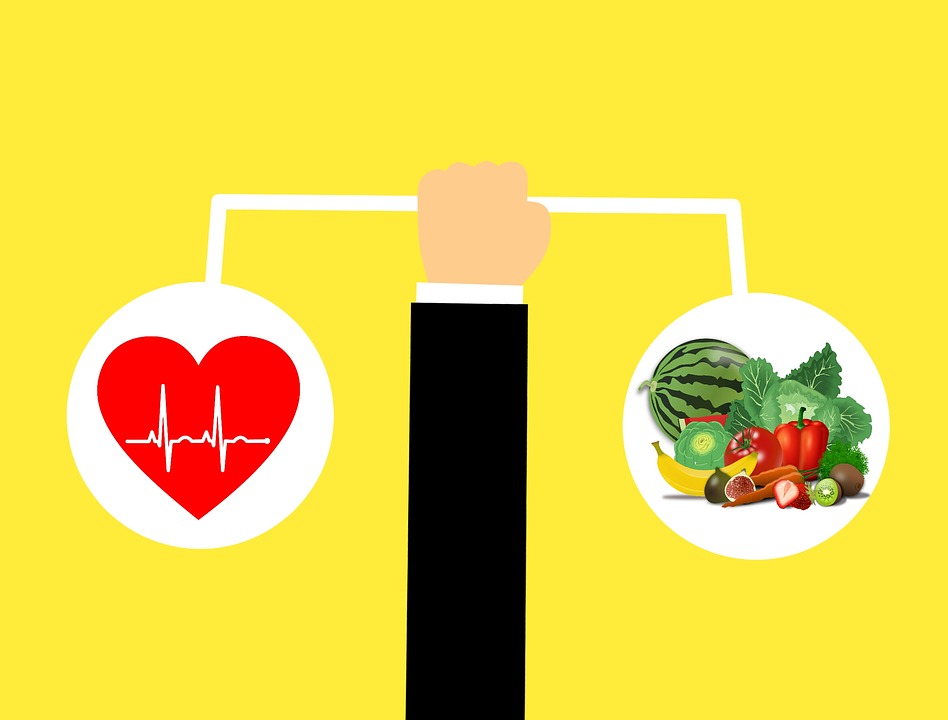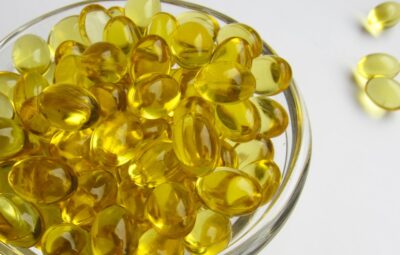Today, shoppers are attempting to pinpoint meal and drink options that they can tailor to fit their individual health objectives and nutritional requirements. No longer is there just one size fits all when it comes to general health and wellness products and services.
In recent times, the concept of functional foods has gained traction due to its many benefits. An unprecedented rise in lifestyle diseases is being observed in America due to the growth in poor dietary habits.
Cardiovascular illnesses are the top contributors to mortality among both males and females. Approximately 25 percent of all fatalities in the United States are the result of heart disease. A person in this nation has a cardiac episode every 40 seconds. Within the United States, over sixty deaths occur due to a stroke on a daily basis.
It is important to alter one’s lifestyle habits to lower the chances of having any heart-related health issues. Decreasing cigarette and liquor use, engaging in physical activity frequently, and consuming a nutritious diet are fundamental practices.
What you eat can be a big factor in whether you will have a long and successful life. Research has shown that certain foods with beneficial properties can be beneficial for keeping your heart in optimal condition.
What Are Functional Foods?
Different types of food have varying amounts of micronutrients and macronutrients.
Functional foods are meals that possess advantages to health apart from the essential nutrition they provide. Research has revealed that consuming foods rich in nutrients can improve overall wellness and minimize the odds of developing an illness.
The Academy of Nutrition and Dietetics describes functional foods as “nutritionally-augmented products such as whole foods, fortified foods, enriched foods, and enhanced foods that, when consumed regularly within a diverse diet, have been proven to provide health benefits.”
For instance, a serving of plain rice does not offer any vitamins or minerals apart from its carbohydrate content. Nevertheless, a helping of oat-based cereal has soluble fiber that could assist in reducing cholesterol count. This qualifies it as a “functional food.”
Experts advise that functional foods should be eaten in their natural, unaltered form rather than taking them in supplement form. Complete foods are more useful because all the components within them interact with each other in a productive way.
How Food Can Improve Heart Health
There are various components that contribute to the well-being of your heart, like blood pressure and the state of your arteries. Research indicates that incorporating more leafy greens into one’s diet can contribute greatly to better cardiac wellness.
Every fresh research indicates a significant relationship between one’s diet and the development of heart disease. The food that is consumed affects the levels of cholesterol, triglycerides, and inflammation.
We are lucky to be increasing our knowledge of precisely how certain vitamins and minerals can help to promote our cardiac health.
Micronutrients That Support a Healthy Heart
The number of micronutrients can have an effect on triglycerides, inflammation, and cholesterol levels, all of which can contribute to increasing the risk of developing heart disease. If you do not experience any heart medical issues, following a healthy diet may drastically reduce the danger of heart disease.
Commonly termed “junk” food is generally full of salt, sugar, and unhealthy fats. By reducing our intake of unhealthy snacks and introducing beneficial micronutrients, we can ensure that our hearts perform optimally.
Top Functional Foods for Heart Health
Eating specific types of food does not guarantee complete prevention of heart disease. However, it has been confirmed that the danger can be lessened.
Here are some foods you should consider eating to maximize your heart health:
Fish
Eating fish can be a more beneficial option than consuming red meat if you are looking to maintain a healthy heart and proper protein levels. Eating fish regularly, at least once or twice weekly can decrease the risk of having a heart attack.
Fish naturally containing omega-3 fatty acids work to lessen inflammation in all parts of the body. This reduces the risk of strokes.
Omega-3 fatty acids have been known to reduce triglyceride levels, diminish the ability of the blood to clot, lessen blood pressure, and minimize the occurrence of irregular heartbeats. Fish such as salmon, trout, mackerel, and tuna offer a high amount of omega-3 fatty acids. Certain types of plants that contain a high amount of omega-3 fatty acids include tofu, tempeh, and edamame.
Around 3.5 ounces of salmon supplies about 27 grams of protein, 216 calories, and 1.4 grams of omega-3 fatty acids.
Fruits and Vegetables
Fruits and vegetables contain large amounts of dietary fiber, various vitamins, minerals, and compounds that help protect against cell damage. A wide array of fruits and vegetables can help guard against cardiovascular issues, including strokes, as well as other illnesses connected to lifestyles, like diabetes.
Vegetables in the mustard family, like kale, broccoli, spinach, and collard greens, provide an abundance of helpful antioxidants and vitamin K. Vitamin K works to safeguard your arteries by promoting proper coagulation of the blood. They are also packed with dietary nitrates, which decrease the hardness of blood vessels.
Eating fruits like apples, pears, and oranges can reduce bad cholesterol and enhance the function of blood vessels. Eating at least 8-10 portions of produce each day can drastically reduce the likelihood of cardiovascular illness.
Berries
It is commonly thought that healthy food is not very flavorful. However, berries are a glorious exception to this trend. Berries provide a delightful way to get a healthy dose of antioxidants and plant-based nutrients.
Here are some varieties that you should consider adding to your diet:
- Raspberries are an excellent source of fiber and antioxidant polyphenols called ellagitannins, which can help reduce oxidative stress.
- Strawberries are a rich source of vitamin C and may help reduce many risk factors, such as inflammation, triglycerides, and oxidative stress.
- Acai berries have grown in popularity as supplements because of their high antioxidant content and ability to reduce blood cholesterol.
Legumes
Legumes like lentils, peas, chickpeas, beans, soybeans, and peanuts are beneficial for keeping the cardiovascular system in good condition. Consuming legumes on a regular basis can aid in decreasing your overall cholesterol and triglyceride levels.
Legumes contain a considerable amount of soluble fibers, phytosterols, and antioxidants which make them an integral part of one’s diet. Studies have shown that including a cup of legumes in your daily food intake can be of significant help by:
- Lowering “bad” LDL cholesterol.
- Increasing “good” HDL cholesterol.
- Reducing blood pressure.
- Helping maintain healthy blood glucose levels.
- Helping lower body fat percentage.
Legumes provide a more beneficial amount of protein compared to red meat because of the lack of fatty substances from animals.
Beans
Beans are an inexpensive low-fat, high-fiber protein source. Plants supply plentiful phytochemicals that help lower the likelihood of suffering a stroke.
Legumes are a great way to get soluble fiber, which has the power to bind cholesterol and triglycerides in the gut. This prevents them from being processed in the digestive tract and being released into the bloodstream.
Research has shown that consuming roughly 10 grams of soluble fiber each day (the same amount found in a cup of beans) can lower LDL cholesterol levels considerably. Legumes likewise have saponins and phytosterols, elements that can reduce bad cholesterol and triglyceride levels.
Beans also help you restrict your food intake. Eating a portion of beans can give you a sense of being more full because the high fiber content will fill up your stomach rapidly. It also causes a slower rise in blood sugar.
Whole Grains
Modern food technology strips grains of essential nutrients. Grains that have the germ, endosperm, and bran, which are all full of nutrients, are categorized as whole grains.
Grains that are unprocessed are plentiful in dietary fiber, which aids in lowering cholesterol levels in the blood. Moreover, these items contain significant amounts of thiamin (B1), riboflavin (B2), niacin (B3), folate (B9), iron, magnesium, and selenium which are all essential nutrients.
Eating Well
One criterion people use to define having eaten well is the quality of the food and beverages consumed, second only to how good it tastes (FMI 2019a; see figure 1). Also, this is the first time that consuming food that can give my body certain advantages has become more important than eating food that is good for me overall.
The idea of consuming food in moderation is a crucial part of healthy eating. However, this has declined 5% throughout the past year among all age groups, according to the FMI (2019a). Approximately 40% of people do not know the definition of “mindful eating” (IFIC 2019). Millennials, millennials with children, and older people of Generation Z seem to emphasize the same points as other age groups when it comes to eating well: that the food must be tasty and nutritious, and of high quality; and that eating it should be in moderation. However, compared to every other generation, they are much more likely to opt for food with “specific benefits to the body”, followed by food that is overall beneficial to one’s health (FMI 2019a).
An increasing curiosity in the special features of nutritious food and components is creating the opportunity for superfoods and newer food components. Approximately 50% of people from the older generations of Gen Z and more than four out of ten millennials believe that eating unusual foods is necessary for eating well, which is significantly higher than the 24% of baby boomers who feel the same. (FMI 2019a).
Eating healthily is now all about striking the correct balance between reducing so-called ‘bad’ nutrients (e.g. sugar, salt or carbs) and increasing ‘good’ ones (like fiber and protein). Consumers tend to pick the higher-fat version of many items but also reduce the amount that they eat. It is generally accepted that consuming certain unhealthy items can be okay if done in small amounts, allowing for selective pleasure (FMI 2019a).
Furthermore, 60% of individuals prioritize consuming food in the company of family and/or companions when attempting to have healthy eating habits. The importance of dining with other people has gone up by 4 percent in the 12-month period, according to the FMI (2019a).
It is considered vital to eat healthily for four out of 10 customers by consuming items that are sourced responsibly and produced sustainably. Approximately half of the members of the millennial generation take ethical and environmental sustainability into consideration when deciding to eat healthily, while fewer than a third of older generations do so (FMI 2019a).
In conclusion, people are mostly eager to see firm steps taken by corporations addressing issues like waste production, contamination, and global warming (Hartman 2019b). Moreover, seals/certifications are playing an increasingly important role. The certification seals for non-GMO, Rain Forest Alliance, Fair Trade, Humane Certified, and Certified Carbon Neutral have all seen a significant boost in their impact since 2017, increasing by 14%, 12%, and double-digit percentages respectively (Hartman 2019b).
Mind Matters
When responding to the question of what health constitutes, a majority (57%) of people said that it is the ability to manage stress, nearly half (47%) stated being mentally sharp, and just under half (45%) pointed to having the capacity to rest and have fun. Of the benefits consumers are hoping to gain from food, better brain health is listed as the sixth most desired result, with improved emotional and mental health ranking tenth (IFIC 2019).
For individuals aged 50 and over, mental and emotional health is the seventh highest prioritized health benefit, they look for in their food, with memory, focus, and cognition ranking fourth in importance, according to a survey conducted by the IFIC in 2018. Having a sharp mind as one gets older is the most prominent concern for health worldwide, and American citizens strongly worry about it. In the US, remembering is the third greatest health issue that people worry about; feeling fatigued is fifth, and being anxious is ninth; among those aged 18-29, lack of sleep is fourth. In the United States, stress and anxiety have become the most serious health issue people are striving to address or treat, overshadowing other conditions such as obesity (Hartman 2019a).
Almost four out of five Americans have difficulty sleeping at least one evening a week, with almost two out of five having problems sleeping at least five times per week (Packaged Facts 2017). The same proportion of people regards “obtaining adequate rest” as the most significant component for preserving good health and avoiding medical matters (HealthFocus 2019).
Approximately 40% of individuals who take a hemp-derived CBD food item or supplement do so to reduce anxiety, while 36% say they do so to reduce pain; 34% use it to induce relaxation, 29% use it to get better sleep, and 24% claim to do so to lighten symptoms of depression (NBJ 2019).
Relaxation- and stress-promoting ingredients were found to be among the hottest food and drink trends of the year, according to the National Restaurant Association’s 2019 survey. The National Restaurant Association reported that for 2020, the top two culinary trends were CBD snacks/sweets as first, and the runner-up being CBD-infused meals/drinks.
Forty percent of grown-ups associate protein with an increase in mental vigor and brain nourishment; over half think that food items derived from plants give mental vitality (HealthFocus 2019). More than 50 percent of shoppers think that their digestive health and microbiome have an extremely/very salient influence on mental health, the ability to age well, feeling positive, and thwarting stress (HealthFocus 2019).
Last year, sixty million Americans utilized a natural supplement for mental health (such as omega-3s, ginkgo biloba, green tea, or combination herbs), compared to only ten million who used a specialized brain supplement (for instance, Prevagen) (AARP 2019). For the week ending August 11th, 2019, IRI reported that dollar sales of brain health supplements grew by 24% while those designed to aid sleep and improve mood increased by 16%. Approximately one-fifth of people surveyed (22%) used a supplement to improve their emotional health (Sanders 2019).
Melatonin, along with herbs like chamomile, lavender, valerian, magnesium, 5-HTP, kava kava, hops, ashwagandha, and L-theanine (found in tea) will be increasing in popularity as aids for sleeping and calming down (as reported by NBJ in 2019).
In conclusion, one-fourth of purchasers desire more practical items (such as DHA and choline) that would promote kids’ brain growth (Datassential 2018). The most widespread assertion attached to new international infant formula products released in 2018 was related to brain development (Innova 2019).
It is estimated that half of the consumers tried a different diet or eating regimen in the past year (Hartman, 2019a), so food plans that boost brain health should be seen as desirable. The effects of the Mediterranean diet on neurological health, such as improving cognitive functions, and managing Parkinson’s and Alzheimer’s, have been acclaimed for a long time. Socializing and eating meals with friends are included in this way of life.







